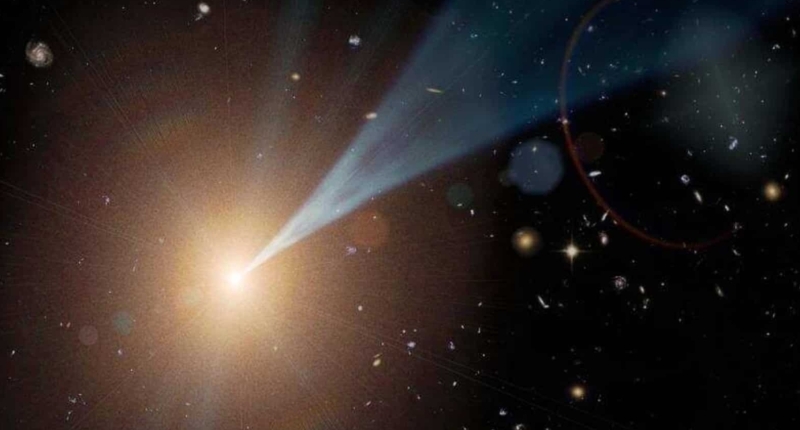A recent study by the Royal Astronomical Society has discovered that a supermassive blackhole in a galaxy named PBC J2333.9-2343 has changed its direction and is now facing Earth. The research has reclassified the galaxy as a giant radio galaxy with a blazar or active galactic nucleus in its core. The galaxy is nearly 40 times larger than the Milky Way and located 657 million light-years away. The change in direction of the galaxy is a significant discovery for scientists as they are yet to determine the reason behind it. The study also revealed that the structures closer to the nucleus of the galaxy represent younger and active jets, while the ones far away are relics of past activity. Blazars are high-energy objects and considered to be one of the most powerful phenomena in the Universe. This discovery will provide exciting opportunities for researchers and scientists in the field of astronomy.
According to a recent study published on March 21 by the Royal Astronomical Society, a supermassive blackhole has changed its direction and is now directly facing the Earth. The team of scientists at the society has reclassified a galaxy, 657 million light-years away, as a giant radio galaxy that is four million light years across, nearly 40 times the size of the Milky Way. The galaxy, named as PBC J2333.9-2343, has a blazar, an active galactic nucleus, with a relativistic jet or supermassive blackhole in its core, which happens to be facing our planet.
The research revealed that the galaxy’s direction has changed by 90 degrees, and it is now pointing directly towards Earth. Dr. Lorena Hernandez-Garcia, the spokesperson of the Royal Astronomical Society, said, “We started to study this galaxy as it showed peculiar properties. Our hypothesis was that the relativistic jet of its supermassive black hole had changed its direction, and to confirm that idea, we had to carry out a lot of observations.”
The scientists are not yet sure about what caused the drastic change in direction of the galaxy. However, they speculate that it might have collided with another galaxy. The study also suggested that the structures located closer to the nucleus of the galaxy represent younger and active jets, while the ones far away are the relics of past activity.
Blazars, like the one in PBC J2333.9-2343, are very high-energy objects and are considered to be one of the most powerful phenomena in the Universe. The direction of the blackhole facing Earth is a significant discovery for scientists and researchers in the field of astronomy. It is still unclear how this change in direction will affect our galaxy.
In conclusion, the recent research conducted by the Royal Astronomical Society has revealed that a supermassive blackhole in the galaxy PBC J2333.9-2343 has changed its direction and is now facing the Earth. The galaxy has been reclassified as a giant radio galaxy that is four million light years across, with a blazar or an active galactic nucleus in its core. While the reason behind the drastic change in direction of the galaxy is still unknown, this discovery is an exciting development for the scientific community.
Don’t miss interesting posts on Famousbio

